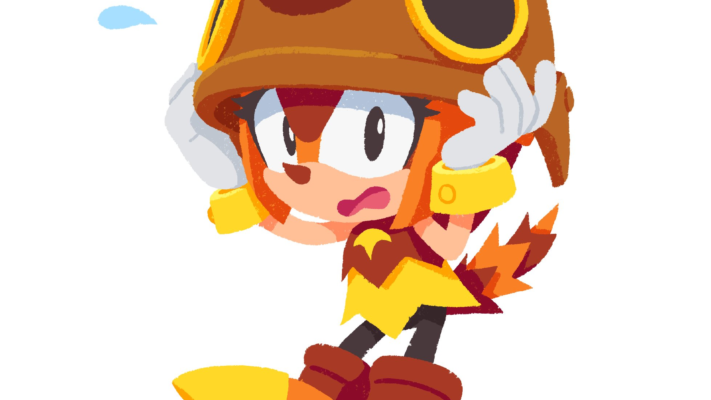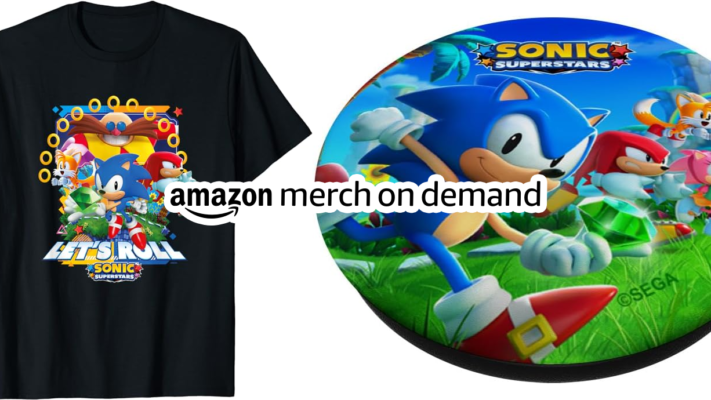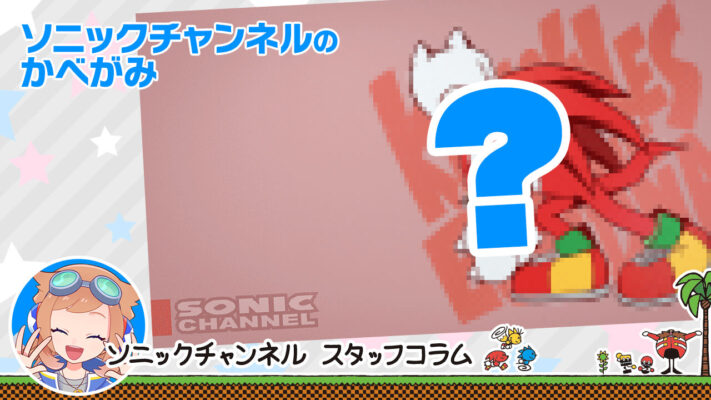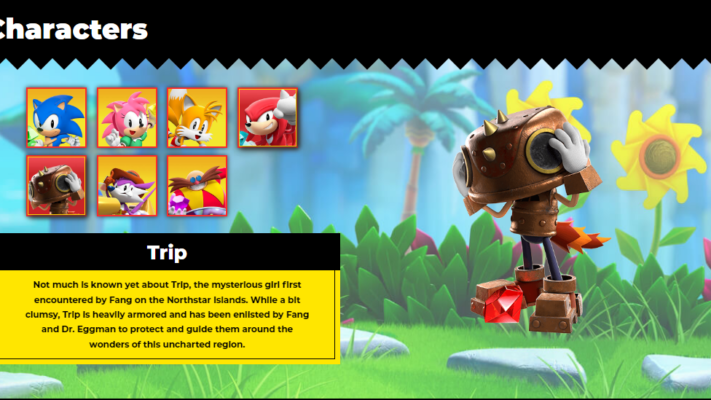Tokyo Game Show 2023 held at Makuhari Messe in Chiba from September 21st to 24th. We bring you an interview with Takashi Iizuka (Producer of the Sonic series) and Naoto Ohshima (Development Lead & Representative Director of Arzest) regarding Sonic Superstars, scheduled for release on October 17, 2023.

――Sonic Frontiers which was a new challenge for the Sonic series, is still fresh in memory. Was the development of Sonic Superstars conducted concurrently?
Iizuka: Sonic Frontiers took about five years to produce, but this title also took around two and a half years, so the production periods overlapped.
――Please tell us about the circumstances that led to Mr. Ohshima, the designer of the original Sonic the Hedgehog, joining the production.
Iizuka: Last year, with Sonic Frontiers, we made significant advancements in 3D Sonic, but simultaneously, there was a plan to modernize Classic Sonic in a significant way. When creating a new title for the Classic series, we wanted to involve someone with a connection to it. So, at a casual level, I had a chat with Mr. Ohshima, asking, “Wouldn’t you like to join?” He graciously accepted, and that’s how it happened.
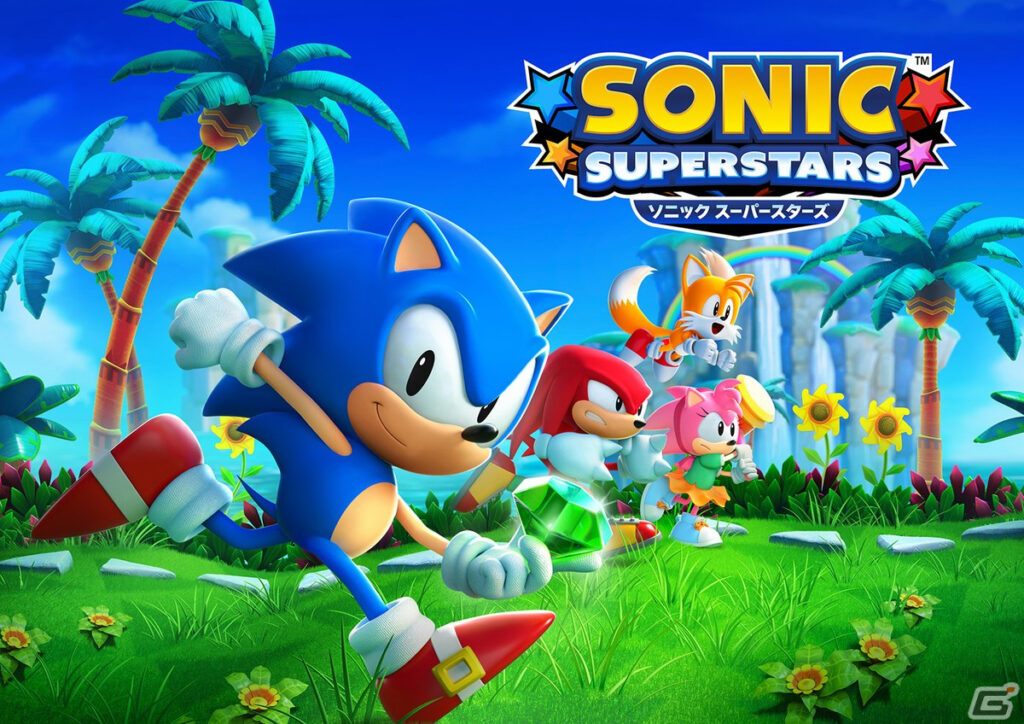
――The expression “evolutionary form of Classic Sonic” has been used. What concept did you have in mind while working on its development?
Iizuka: The Classic series is deeply rooted, as evident from its name. Therefore, it was an absolute requirement for this title to replicate the past gameplay and mechanics.
Thus, when working with Mr. Ohshima and the team at Arzest, we asked them to recreate the same feeling as the 2D Sonic from the past.
Ohshima: Since behaviors change based on character combinations, we were adjusting right up until the very end from the start of development.
――In the Sonic series, I believe there has been a dual approach in both 2D and 3D aspects. When striving to blend the gameplay sensation of 2D side-scrolling with the expression of 3D graphics, as seen in this title, were there specific points you were conscious of?
Ohshima: Since we actually create the maps in 3D, playing it conventionally doesn’t feel like a 2D experience. The gameplay is entirely in 2D, but the characters exist within a three-dimensional space. There were loads of incredibly tedious things, but we’ve implemented various clever tricks (laughs).

――When I actually played it, I was amazed by the vertical scale of the stages. How extensive is the content?
Iizuka: If you consider a business card as one screen, it’s larger than this table (conference table), I suppose (laughs).
That’s precisely the charm and tradition of Classic Sonic. Normally, if there’s one main route, you don’t need to create anything else. However, in Sonic’s case, if you do well, you progress on the upper route, and even if you fall below, there’s a different route, so it expands vertically significantly.
Ultimately, all paths converge towards the goal in level design. From the production side, it requires tremendous effort. But from the player’s perspective, the gameplay allows for casual falls, reassuring that it’s alright. I think that’s the essence of the Sonic series.
Ohshima: Sonic moves at five times the speed of a typical action game, so without five times the expanse, the game would end in 10 or 20 seconds. Designing levels so that there’s always something wherever you go on the map was quite challenging.
――When I played the demo version, in the stage called “Cyber Station,” there seemed to be a gimmick to progress, but there was also an aspect where falling off the stage was possible, making it quite challenging.
Iizuka: Normally, that’s a later stage, towards the end, that wouldn’t be available on the demo booths (TGS2023). Many people wanted to play after seeing in the trailer how Sonic turns into a jellyfish or a rocket, so we included it.
――The stages for acquiring the Chaos Emeralds had both 3D and 2D elements, making the gameplay enjoyable.
Iizuka: The “Special Stage” involves progressing in a roping action-like manner in 3D to collect Chaos Emeralds. The “Bonus Stage” consists of gathering medals on rotating stages.
For the Special Stage, we adhered to the tradition of offering a 3D-like gaming experience. Players can use directional keys and one button, experiencing a stage where they pursue emeralds while freely navigating in a 3D space.

――I believe that the ability for four-player cooperative multiplayer is a significant feature. Could you share the background behind its implementation?
Iizuka: Games like Sonic Frontiers are typically designed for solitary, concentrated gameplay. However, for the Classic series, we aimed for a more casual, lively gaming experience to distinctly separate the Modern and Classic series.
Yet, Sonic’s game speed doesn’t align well with multiplayer gameplay. When I discussed this with Mr. Ohshima, he enthusiastically agreed to take on the challenge, and that’s how we made the four-player cooperative play possible this time.
――If one player moves ahead while the rest go off-screen, what happens in that situation during the four-player play?
Iizuka: In a typical action game, it tends to be the type where four players progress together on the screen. However, if we were to do that with Sonic, it would require waiting for someone, and the camera not advancing ahead, resulting in gameplay that doesn’t suit Sonic and becomes stressful.
While pondering what multiplayer gameplay would be fitting for Sonic, together with Arzest, we devised a game system where if someone moves ahead, the other players’ characters turn into icons and follow Player 1. They can return anytime with a single button press.
Ohshima: When returning, the behavior of the character leading at the front is directly copied, so even if you’re left behind, you can catch up and turn the tables from there.

――Regarding the selectable characters, Sonic seems tailored for experienced players while the others appear to cater to beginners…
Iizuka: Sonic has his unique move called the “Drop Dash,” allowing him to dash upon landing. Therefore, in activities like time trials, Sonic would have the most advantage.
With Tails, you can fly, and Knuckles can climb walls, making gameplay significantly more forgiving than Sonic’s. If there’s a section that Sonic can’t handle, playing as Tails or Knuckles might make it a breeze to clear.
Amy can perform a double jump and attack enemies with her hammer, making her a beginner-friendly character, easy to play with.
――Are there places within the stages that can only be accessed by characters other than Sonic?
Ohshima: Yes, indeed. There are areas that require Tails or Knuckles, where you can find valuable items or obtain medals.
――Does the story change depending on the chosen character?
Iizuka: We’ve prepared introduction animations and endings for all characters. Additionally, there are exclusive stages where each character’s abilities are fully utilized to progress.
――Regarding the stage gimmicks and the bosses, they seemed challenging. Is this design intentional?
Iizuka: Our aim is to set a difficulty level similar to the traditional Classic series, but it’s slightly more challenging. This time, we’ve adjusted the boss battles to have a satisfying difficulty due to the presence of “Emerald Powers,” an additional power.
Moreover, in multiplayer, with four players attacking a single enemy, the more you play in multiplayer, the lower the difficulty in boss battles. It becomes more accessible.
Ohshima: With the combination of Emerald Powers and the power of four players, the bosses become a breeze (laughs).



――There’s a Battle Mode introduced that supports offline and online play. Could you share the background behind its implementation?
Iizuka: The Story Mode is a game where four players cooperate to reach the goal, but apart from that, we’ve included a Battle Mode to cater to the desire for competitive gameplay when people gather.
From the four modes – “Star Collect,” “Survival,” “Fighting,” and “Race” – three are randomly selected for a three-round showdown. The person with the most points at the end wins. In offline mode, up to four players can play with split screens, and in online mode, up to eight players can join.
――Currently, it’s been revealed that there are four modes, but are there plans to add more through updates?
Iizuka: While there are four, it’s not limited to just four stages for each mode; there are multiple stages prepared for each mode, so the actual count is much higher. Additionally, as DLC content for the Digital Deluxe Edition, LEGO stages will be added.


――How much customization is available for the Metal Fighters used in the Battle Mode?
Iizuka: The initial Metal Fighter starts as a blank slate. You can purchase parts such as head, arms, torso, legs, and more using the medals acquired in Story Mode, allowing you to create your own robot to your liking.
Ohshima: You can even change the coloring.


――The Sonic series has provided a wide range of gameplay experiences. Is the plan to continue developing with a broad spectrum, from side-scrolling to new approaches like Sonic Frontiers?
Iizuka: Within our team, we consider 3D Sonic and 2D side-scrolling Sonic as significant pillars. We aim to continue nurturing these two aspects continuously.
――Finally, could you please share a message with the readers as the release approaches?
Ohshima: For those experiencing Sonic for the first time, we’ve included a tutorial called ‘Practice Mode’ on the world map. By conquering that mini-map, you’ll grasp the basic controls. I encourage you to try playing with each character.
Also, I hope everyone gets to experience Sonic’s speed. I’d like to invite you to run freely without worrying about enemies or falling, just to truly feel the speed.
Iizuka: Last year, we received positive feedback from everyone for Sonic Frontiers, a modern Sonic title. This year, we announced Sonic Superstars as a new addition to the Classic Sonic series.
This time, it’s not just for solo play but for playing with friends and family. We hope it reaches a wide audience and that everyone enjoys it. Thank you very much.

Source: Gamer
Discover more from Sonic City ⋆★ Sonic the Hedgehog News, Media, & Community ★⋆
Subscribe to get the latest posts sent to your email.


